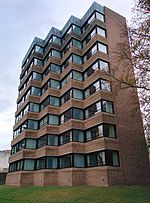Fitzwilliam Museum

The Fitzwilliam Museum is the art and antiquities museum of the University of Cambridge. It is located on Trumpington Street opposite Fitzwilliam Street in central Cambridge. It was founded in 1816 under the will of Richard FitzWilliam, 7th Viscount FitzWilliam (1745–1816), and comprises one of the best collections of antiquities and modern art in western Europe. With over half a million objects and artworks in its collections, the displays in the museum explore world history and art from antiquity to the present. The treasures of the museum include artworks by Monet, Picasso, Rubens, Vincent van Gogh, Rembrandt, Cézanne, Van Dyck, and Canaletto, as well as a winged bas-relief from Nimrud. Admission to the public is always free.The museum is a partner in the University of Cambridge Museums consortium, one of 16 Major Partner Museum services funded by Arts Council England to lead the development of the museums sector.
Excerpt from the Wikipedia article Fitzwilliam Museum (License: CC BY-SA 3.0, Authors, Images).Fitzwilliam Museum
Fitzwilliam Street, Cambridge Newnham
Geographical coordinates (GPS) Address External links Nearby Places Show on map
Geographical coordinates (GPS)
| Latitude | Longitude |
|---|---|
| N 52.200278 ° | E 0.119444 ° |
Address
Fitzwilliam Museum
Fitzwilliam Street
CB2 1QH Cambridge, Newnham
England, United Kingdom
Open on Google Maps







